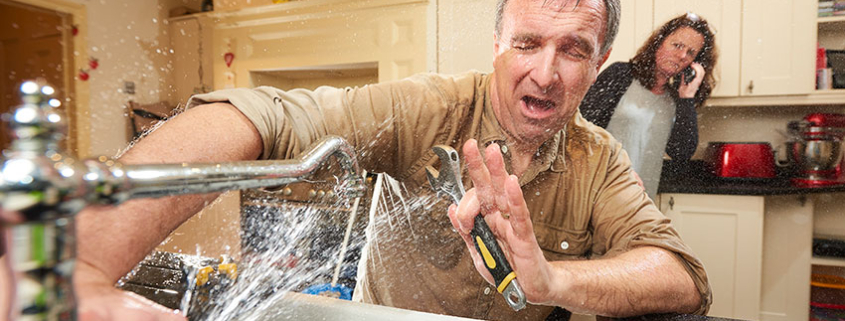Safety First: Home improvement projects you shouldn’t attempt on your own
Taking on home improvement projects by yourself can be a great way to save money. However, it’s vital to identify which projects are better handled by professionals. Minor mistakes in your work can have terrible consequences, potentially resulting in voided warranties, severe damage to your home, or even injuries to yourself.
Here are some home improvement projects you may want to leave for professionals:
- Plumbing. When it comes to plumbing repairs and installations, it’s always advisable to rely on the expertise of professionals. While replacing sinks or toilets are projects sometimes taken on by DIYers, it’s highly recommended to consult a professional when these installations require changes in the pipelines and you’re not used to dismantling and reassembling them. A small error in plumbing work can result in leaks, water damage, the need for more extensive repairs down the line, or even toxic odors or a potential mold problem. The cost to hire a plumber can be anywhere between $75-$150 an hour.
- Roofing repairs. The roof is an expensive part of your home. Not completing necessary repairs properly can result in hefty expenses and potential issues with your insurance. Whether fixing a simple leak or mending cracked flashing, it’s best left to those who know what they’re doing. A roofer can see other possible damage that a DIYer might not and understand the best possible fix for the problem. Most roofers charge $35 to $90 per hour for minor repairs and $50 to $120 for installation of new shingles.
- Electrical work. Any mistake in home electrical work can have severe consequences, posing risks to your home’s safety and well-being. While tasks like installing a dimmer switch or replacing a ceiling light can seem relatively straightforward and safe, not taking the necessary precautions can lead to much bigger problems. The risk of getting shocked or starting a fire is high if you’re not professionally trained. Hiring an electrician typically ranges between $40 and $120 an hour for most electrical jobs.
- Removing walls. There’s much more to removing a wall than just swinging a sledgehammer at it. It’s highly advised to refrain from attempting this as a DIY project. Damaging a load-bearing wall can have detrimental effects on the structural integrity of your home. It can severely damage the construction itself and pose significant risks to your safety. You could also even hit electrical wires you didn’t know existed. The average labor cost to remove a wall can be between $60 and $125 per hour.
- HVAC installations and repairs. Hiring an HVAC professional to install your heating and cooling system is highly recommended to ensure optimal energy efficiency and safety. Attempting the repair or installation yourself could result in significant damage to the equipment, voiding the warranty. Some HVAC systems can leak freon, which can be highly hazardous, posing risks such as dizziness or asphyxia. The cost of these installations varies depending on the type of system and location, but for example, most AC installers charge $75 to $250 per hour.
- Removing old insulation. Old insulation may contain asbestos, a hazardous material with significant health risks. Specialized tools and knowledge are required to remove the insulation safely. Hiring a professional protects your health and ensures a safe living environment. The cost to remove the insulation varies between $1 and $3 a square foot, depending on the type and where it’s located.
- Installing a gas appliance. Many gas accidents happen because gas appliances are incorrectly assembled, connected, or installed. For example, installing a gas cooktop or a water heater requires both electricity and gas to work correctly, and it can require the work of two professionals. Hence, hiring licensed contractors to connect the appliance safely is important.
When should you not DIY a home improvement project? Even if you have a passion for DIY, it’s essential to avoid tackling a project when you lack the proper tools, equipment, knowledge, skills, or necessary time. The absence of these elements can lead to voided warranties, increased costs, and potential injuries to yourself or your loved ones.







Leave a Reply
Want to join the discussion?Feel free to contribute!